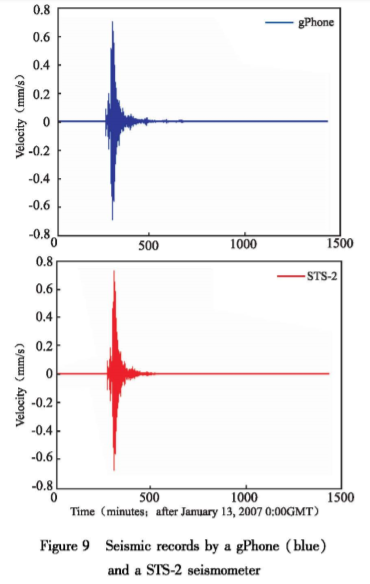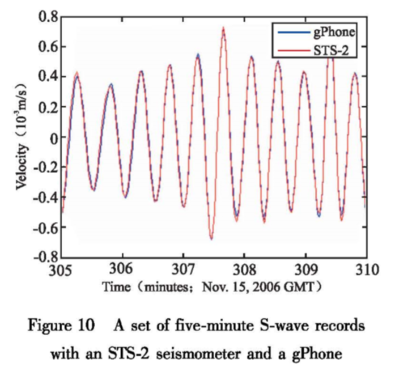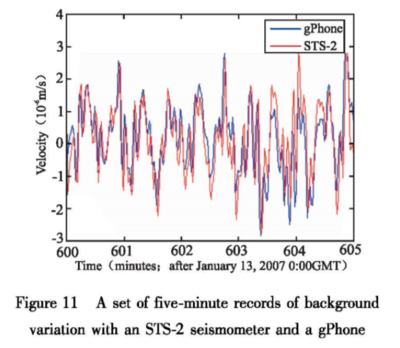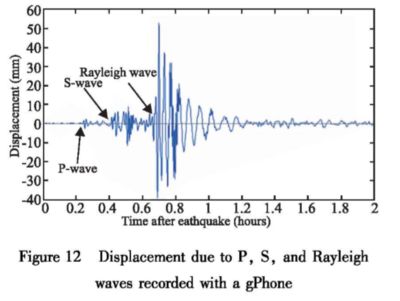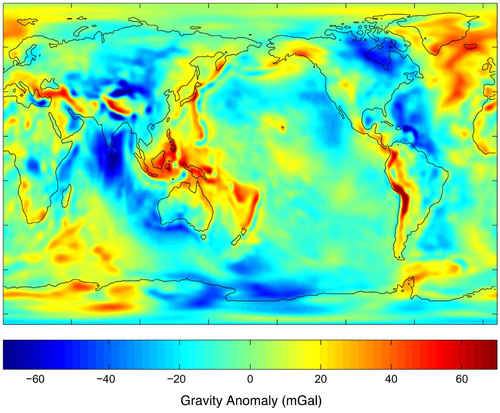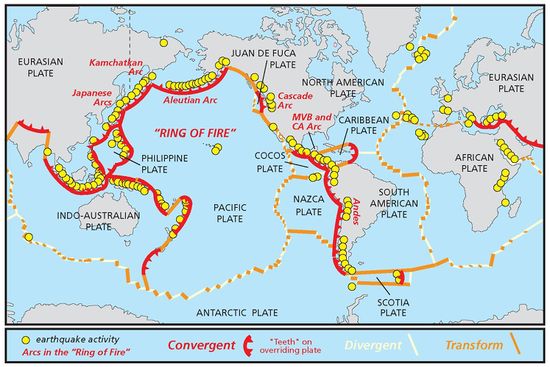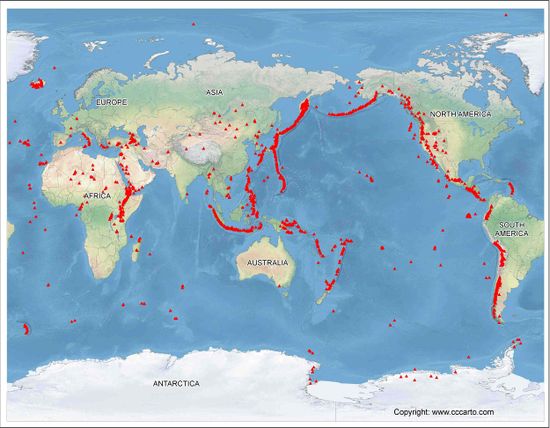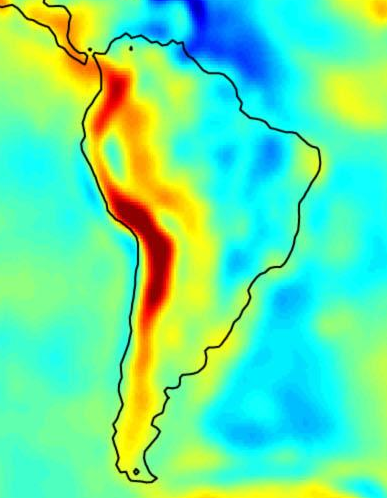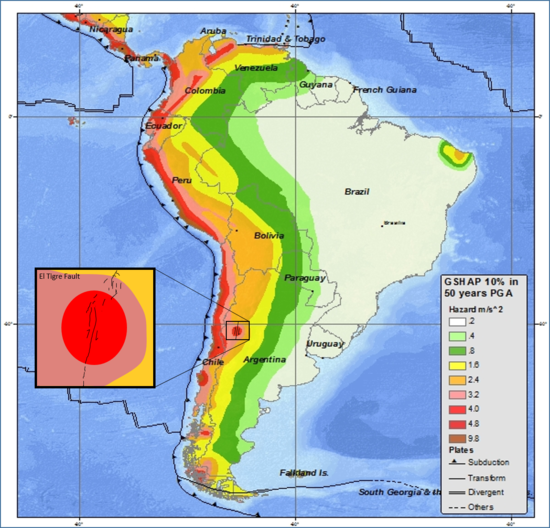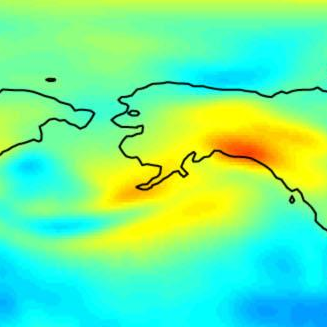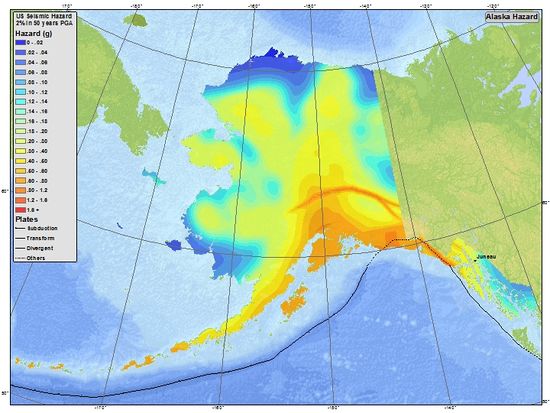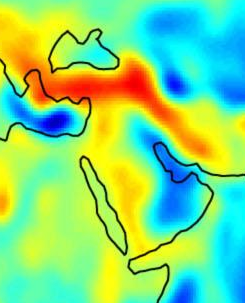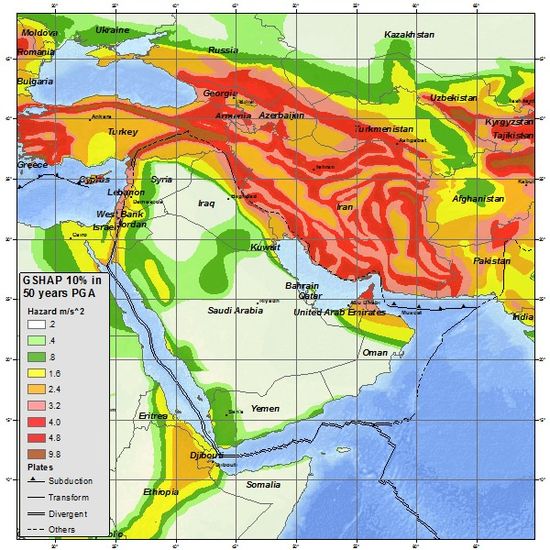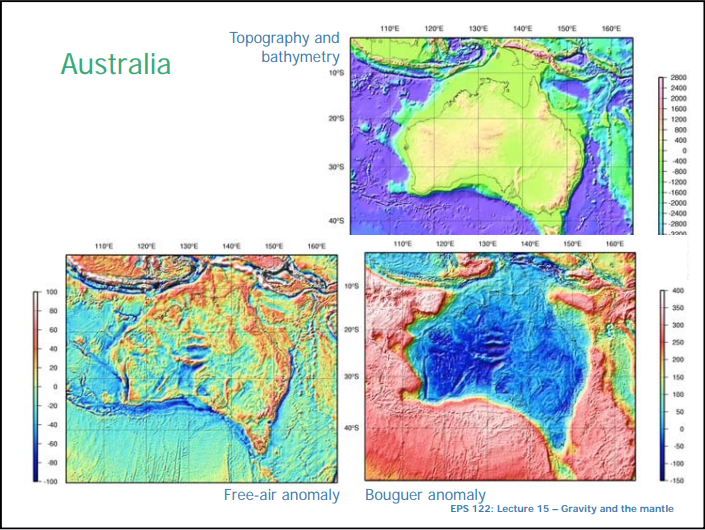Difference between revisions of "Gravimetry"
Tom Bishop (talk | contribs) |
Tom Bishop (talk | contribs) |
||
| Line 103: | Line 103: | ||
https://schmidtocean.org/rv-falkor/operations-and-science-systems/gravimeter/#images | https://schmidtocean.org/rv-falkor/operations-and-science-systems/gravimeter/#images | ||
| − | {{cite|The gravimeter, about the size of a steamer trunk, | + | {{cite|The gravimeter, about the size of a steamer trunk, '''uses magnetism to suspend an internal metal cylinder, and measures changes in the way gravity pulls on that cylinder'''. Many people are familiar with the fact that acceleration from gravity—for instance if you jump out of a plane—is 9.8 meters per second squared. Measured in milligals (mGals)—a common research unit for gravity—that’s 980,000. Remarkably, the gravimeter can detect changes as small as 1 mGal—or roughly one millionth of gravity’s total pull.}} |
With the above device there is no falling object. The magnetism suspends the cylinder. The system then measures changes to that cylinder. | With the above device there is no falling object. The magnetism suspends the cylinder. The system then measures changes to that cylinder. | ||
Revision as of 21:32, 21 January 2019
Gravimetry and Gravity gradiometry is a field of science which supposedly measures the strength of the earth's gravitational field. In these discussions Gravimetry is often used as evidence that the gravitational field of the earth varies with latitude and by location.
It has been found that Gravimetry is not directly measuring gravity at all. Gravimeter devices have been described by professionals in that field as long-period seismometers that are measuring small "jerks" in the background seismic noise and interpreting it as variations in gravity. Gravimeters are, in truth, seismometers. Seismometer devices have been described as having a "gravimeter mode." Seismometers can double-purpose as gravimeters, and can detect the "gravity tides". Gravimeters are often similarly double-purposed as seismometers to detect earthquakes thousands of miles away. Perhaps most illustrative, gravitational anomalies on gravity maps are indistinguishable from the seismic zones. Finally, there are several items which do not make sense with the gravity anomalies, if they were actually a measurement of mass.
The theory behind the field of Gravimetry is that the masses in the subsurface are creating tiny variations or jerks, presumed to be due to "gravity", that are measured by the devices in a unit of measurement called ugal or mgal. We read a description of Gravity Gradiometry on Wikipedia:
https://en.wikipedia.org/wiki/Gravity_gradiometry
“ Gravity gradiometry is the study and measurement of variations in the acceleration due to gravity. The gravity gradient is the spatial rate of change of gravitational acceleration.
Gravity gradiometry is used by oil and mineral prospectors to measure the density of the subsurface, effectively by measuring the rate of change of gravitational acceleration (or jerk) due to underlying rock properties. From this information it is possible to build a picture of subsurface anomalies which can then be used to more accurately target oil, gas and mineral deposits. It is also used to image water column density, when locating submerged objects, or determining water depth (bathymetry). Physical scientists use gravimeters to determine the exact size and shape of the earth and they contribute to the gravity compensations applied to inertial navigation systems. ”
What is Gravimetry?
A quote from the Enhanced Geothermal Innovative Network for Europe (Arch) explains:
“ Gravimetry
As the gravitational field of the earth depends on the density of the rocks, variations of the gravitational field (Bouguer anomalies) observed at the surface or in a borehole are due to density changes in the subsurface, which can be interpreted in terms of changes in the composition and/or geometry of the geological layers. ”
From Gravity surveying: a brief introduction (Arch) we read:
“ Everything is gravitationally attracted to everything else. And the gravitational attraction of an object is proportional to its mass. So if the rocks below you at a given place are denser, then the gravity there will be slightly larger. The changes in gravity from place to place are small: gravity, g, at the Earth’s surface is about 9.81ms−2, but the local variations are a tiny fraction of this; often we are measuring differences of 10−6 ms−2. ”
In The Gravity Method (Arch), its author Dr. Nicolas O. Mariita tells us:
“ The success of the gravity method depends on the different earth materials having different bulk densities (mass) that produce variations in the measured gravitational field. These variations can then be interpreted by a variety of analytical and computers methods to determine the depth, geometry and density that causes the gravity field variations. ”
The Global CCS Institute says:
“ Gravimetry consists of studying the anomalies of the gravity field due to density variations underground. ”
Seismometers are Gravimeters
Comparitive Study
Comparative study of superconducting gravimeters and broadband seismometers STS-1/Z in seismic and subseismic frequency bands (Archive)
“ Superconducting gravimeters and broadband seismometers (vertial component) both measure gravity, but whereas the former are most sensitive to very long period signals (gravity tides with periods longer than 6h), the latter are designed for recording the seismic band (elastic normal modes with periods shorter than 1h) ”
Diagram from p. 212:
The paper says that when comparing with Gravimeters to the Seismometers, the gravity spectra is nearly identical:
“ The gravity spectra of the BFO station show that the seismometer STS-1/Z and the superconducting gravimeter are almost equivalent (see also Ritcher et al. (1995)). Therefore we believe that the high noise level shown by the superconducting gravimeter in Strasbourg is probably due to site effects rather than to the instrument itself: a possible reason is that Station J9 is located on a thick layer of sediments (about 3000m) in the Rhine Graben which amplifies noise at long periods. ”
Further, seismometers are also able to detect the tides -- p.204, second paragraph:
“ A first attempt to use broadband seismometers outside their traditional spectral range was made by Pillet et al. (1994), and they showed that the STS-1 is able to receive strong tidal signals around diurnal frequencies. ”
It is mentioned that the "gravity tides" are found in the subseismic band:
A definition of "subseismic band":
“ "subseismic band" (i.e. frequency lower than 0.03mHz) that has very strong background noise; ”
Is a study of subseismic activity a study of gravity?
Gravimeter Mode
From https://en.wikipedia.org/wiki/Gravimeter we read:
“ Many broadband, three axis, seismometers in common use are sensitive enough to track the sun and moon. When operated to report acceleration, they are useful gravimeters. Because they have three axes, it is possible to solve for their position and orientation, by either tracking the arrival time and pattern of seismic waves from earthquakes, or by referencing them to the sun and moon tidal gravity.
Recently, the SGs, and broadband three axis seismometers operated in gravimeter mode, have begun to detect and characterize the small gravity signals from earthquakes. ”
The reader might ask, if gravimeters are entirely different devices than seismometers, how could seismometers have a "gravimeter mode"?
Gravimeters are Seismometers
This inventor describes gravimeters as follows:
http://www.njsas.org/projects/tidal_forces/magnetic_gravimeter/baker/
“ A seismometer usually looks for the smallest possible acceleration changes. Since gravity is physically the same as acceleration, gravimeters are merely versions of seismometers with an infinitely long period response. ”
Another gravimeter = seismometer reference is found in The Gravity Method by Dr. Nicolas O. Mariita. On p.4 we read:
“ An important factor in obtaining useful gravity values in detailed surveys is determining the earth tide effect as their gravitational effects may be greater than the gravity field variations due to the anomalous features being sought. The final aspect of reading a gravity meter concerns seismic activity or cultural movement such as those of vehicles or people. These will disrupt the readings (the meter is actually a low-frequency seismometer) and even though the Scintrex meter has an anti-seismic filter (the La Coste-Romberg meters are also mechanically damped to lessen the effects of earthquakes), readings will still be disrupted. ”
Again, we see that the gravimeter is actually a seismometer.
Recall from the above seismometer section that the seismometer was detecting gravity tides on subseismic bands, which was described as:
“ 'subseismic band' (i.e. frequency lower than 0.03mHz) that has very strong background noise ”
Hence, the gravimeter is a low-frequency seismometer, like the seismometer above, taking data out of those low-frequency bands.
From p.2 of a paper on seafloor measurements (Archive) from the Journal of Geophysical Research we read another reference:
“ We have collected vertical compliance data using a gravimeter (long- period seismometer) and a differential pressure gauge ”
Function of a Gravimeter
It is often argued that a gravimeter works by dropping a body and measuring the full acceleration. While some types of graviters drop bodies, others do not. Consider how the following gravimeter works:
https://schmidtocean.org/rv-falkor/operations-and-science-systems/gravimeter/#images
“ The gravimeter, about the size of a steamer trunk, uses magnetism to suspend an internal metal cylinder, and measures changes in the way gravity pulls on that cylinder. Many people are familiar with the fact that acceleration from gravity—for instance if you jump out of a plane—is 9.8 meters per second squared. Measured in milligals (mGals)—a common research unit for gravity—that’s 980,000. Remarkably, the gravimeter can detect changes as small as 1 mGal—or roughly one millionth of gravity’s total pull. ”
With the above device there is no falling object. The magnetism suspends the cylinder. The system then measures changes to that cylinder.
“ The researchers aren’t interested in that total pull, though; they’re interested in learning about the seafloor. So they process the data coming in to subtract out all the normal weight of Earth below them, which is relatively constant, as well as the weight due to topography, which they get from the sonar mapping. ”
As stated, the interest isn't in the total pull. The designers mainly care about using the device as a seismometer.
Absolute Gravimeter Description
From Geophysics From Terrestrial Time‐Variable Gravity Measurements we read about a device that does involve a falling object:
“ In an absolute gravimeter, a test laser beam bounces off the free‐falling body before being reflected back to the interferometer, where the test beam interferes with a reference one. While the dropped mass is completely isolated from the Earth's vibrations during its fall, anthropogenic and natural microseismic noises continuously modify the position of the reference mirror of the interferometer. Even in the absence of an earthquake, the displacements of the Earth's surface are persistent and location and season dependent, reaching up to a few micrometers close to the coast (Kedar et al., 2008), while one should measure the free‐fall distance at the 1 nm precision level in order to achieve a precision on gravity of 10 nm/s^2. In the first white‐light gravimeter, the measurements of gravity were corrected by using the records from a 1 s period seismometer. Early in the 1980s, Rinker (1983) developed the so‐called Super Spring, that is, a modified seismometer providing an inertial reference system at periods shorter than about 1 min—the suspended mass of a seismometer provides an inertial reference frame, independent from the motions of the Earth, at periods shorter than the resonance frequency (Aki & Richards, 2002). The challenge consisted in producing a suspension device of which the free period is about 1 min, that is, longer than the periods ranging 5–20 s, where microseism is the strongest. ”
Gravity anomalies observed before earthquakes
Pre-seismic gravity anomalies before Linkou Ms 6.4 earthquake by continuous gravity observation of Crustal Movement Observation Network of China (Archive)
The reader may ponder why the gravity of the earth would change before an earthquake.
Monitoring earthquakes with gravity meters
From the abstract of a paper titled Monitoring earthquakes with gravity meters we read:
“ Seismic waves from a magnitude 8.3 earthquake in Japan were consistently recorded by five nearly identical gPhone gravity meters in Colorado. Good correlation was also found in the response of two different types of gravity meters and a standard seismometer in Walferdange, Luxembourg to an earthquake of magnitude 8.2 in Japan, indicating that all of them were capable of measuring the surface waves reliably. The gravity meters, however, recorded 11 separate arrivals of Raleigh waves, while the seismometer only one. Thus the gravity meters may be useful for obtaining new information in the study of seismic velocities, attenuation and dispersion. ”
The ending two sentences of that abstract even imply that gravity meters may be superior for measuring seismic elements.
Earthquake Comparison Readings
From the study we see several seismic reading comparisons between gravimeters and seismometers:
Corrections for Latitude
It is asserted that gravimetry has shown trends at different latitudes, and so this is validation of the idea that it is really measuring "gravity". We find that this assertion is unfounded.
From a university course on gravity surveying we read:
http://www.geol-amu.org/notes/m10-1-4.htm (Archive)
“ Recall that, if the Earth were an homogeneous ellipsoid, the value of gravity at the surface would be given by:
g = g0 (1 + k1 sin2 ϕ – k2 sin2 2ϕ)
The objective of gravity surveys is to look for deviations from this reference value. ”
If the objective of gravity surveys is merely to look for deviations from a round earth reference model with the vibrating gravity theory, then the final computed number in meters per second squared would becomes meaningless for the purpose of discussion. Any modifications to the reference values are constructed on an entirely theoretical basis.
The above page tells us that there is a theoretical model and that the goal of gravity surveys is to modify that model. Further down we see, among the list of corrections to be made, the latitude correction:
“ Latitude correction: The earth's poles are closer to the centre of the equator than is the equator. However, there is more mass under the equator and there is an opposing centrifugal acceleration at the equator. The net effect is that gravity is greater at the poles than the equator.
For values relative to a base station, gravity increases as you move north, so subtract 0.811 sin(2a) mGal/km as you move north from the base station. (where a is latitude). ”
We read that we are subtracting or adding values to the reference model and the data to make the corrections for latitude, which is very different than using the data to determine the latitude. The claim that the final number is meaningful as evidence to showcase any particular point is shown fallacious.
Seismic Map Similarities
Convergent Plate and Earthquake Map
Compare the gravity anomalies to a map of the plate boundaries and the earthquake zones:
World Volcano Map
Seismic Hazard Maps
Perplexing Anomalies
The anomalous deviations of gravity, as detected by the gravmieter, are called Bouguer Anomalies.
https://en.wikipedia.org/wiki/Bouguer_anomaly explains:
“ {{{1}}} ”
Note that a correction for attitude needs to be made, and that the data is not in the gravimeter readings itself.
Gravity Anomalies Counter To Theory
Bouguer Anomalies Over The Continents and Oceans tells us that the anomalies are often grater over the ocean than over the land, which seems to be contrary to theory:
“ Why, in general, the Bouguer gravity anomalies are negative in continental areas and positive in oceanic areas? Extending the question further, why do the predominant negative and positive anomalies respectively correspond to the mountain peaks and ocean depths? Although the Bouguer gravity data are not brought on to an even datum, there is fairly a good inverse correlation of Bouguer anomalies with height/depth as well as seismic data. This obviously indicates the excess mass reflected as gravity lows and the deficit mass as gravity highs with respect to the geoid/ellipsoid surface. This is in contrast to the theory of the gravity field which is proportional to the excess or deficit mass. Mathematically speaking, the observed anomalies are proportional to the vertical gradient of gravity, indicating excess mass above the geoid as gravity lows and deficit mass below the geoid as gravity highs. If this were true, far reaching implications arise in the understanding of the theory and interpretation of Bouguer anomalies. ”
The anomalies are negative in continental areas and positive in oceanic areas. The anomalies are also negative in the mountains. These anomalies appear to go against the theory that the anomalies are due to the attraction of mass.
Bouguer Anomalies - Australia
We find the following depiction of Australia's Bouguer Anomalies and Free Air Anomalies on a University of California Berkeley lecture on gravimetry (p.3), showing that the anomalies are negative over continental areas and positive over oceanic areas:
Bouguer Anomalies - Alps of Germany
https://www.leibniz-liag.de/en/research/methods/gravimetry-magnetics/bouguer-anomalies.html
“ This map shows the Bouguer anomalies over the whole of Germany and surrounding areas, in a detailed but still clear way.
...The resulting gravity anomalies vary across the mapped area from -170 mGal in the Alps to +40 mGal around the gravity low in the Magdeburg area. ”
The above map and description shows that the anomalies are negative in the Alps of Germany.
Temp
The goal of gravity surveys is to modify this model"... Lower down it says that the corrections for height and latitude are made to that model.
- Seismometer and Gravimeter Results
Technical Assessment
-Noise
Latitude Corrections
Map Examples
Volcanoes
Fault Lines
Seismic Zones
Complete Bouguer Anomalies
https://www.leibniz-liag.de/en/research/methods/gravimetry-magnetics/bouguer-anomalies.html
Quote
This map shows the Bouguer anomalies over the whole of Germany and surrounding areas, in a detailed but still clear way.
...
The resulting gravity anomalies vary across the mapped area from -170 mGal in the Alps to +40 mGal around the gravity low in the Magdeburg area.
Low in the Alps of Germany.
He tells us about the Bouguer anomalies previously mentioned, and the volcanoes:
Quote
The most commonly used processed data are known as Bouguer gravity anomalies, measured in mGal. The interpretation of Bouguer gravity anomalies ranges from just manually inspecting the grid or profiles for variations in the gravitational field to more complex methods that involves separating the gravity anomaly due to an object of interest from some sort of regional gravity field. From this, bodies and structures can be inferred which may be of geothermal interest.
Volcanic centres, where geothermal activity is found, are indicators of cooling magma or hot rock beneath these areas as shown by the recent volcanic flows, ashes, volcanic domes and abundant hydrothermal activities in the form fumaroles and hot springs. Gravity studies in volcanic areas have effectively demonstrated that this method provides good evidence of shallow subsurface density variations, associated with the structural and magmatic history of a volcano. There is a correlation between gravity highs with centres of recent volcanism, intensive faulting and geothermal activity. For example, in the Kenya rift, Olkaria, Domes and Suswa geothermal centres are located on the crest of a gravity high.
Background Seismic Noise
It should be noted that there is constant background seismic noise, which emanates from the earth. From http://microglacoste.com/gPhoneNoise/gPhoneSeismicNoise.pdf we read:
“ It is interesting to speculate on the precise origin of the background seismic noise. Haubrich et al ii for example, open their article with the following description of the seismic noise background and the large interest it has generated over the years as well as the intractability of its investigation:
The low‐level background unrest of the earth, called microseisms or earth noise, has puzzled seismologists and other scientists for nearly a century. The problem of its nature and causes has proved particularly unyielding, not, however, for lack of investigation. A bibliography covering work up to 1955 [Gutenberg and Andrews, 1956] iii lists over 600 articles on the subject; one covering the years from 1955 to 1964 [Hjortenberg, 1967] iv lists 566. Unfortunately, much of this work has advanced the subject but slightly. ”
Airborne Seismic Waves
It should also be noted that seismic waves can become airborne, which would explain the ability of gravimeter devices on airplanes to register the anomalies.
https://en.wikipedia.org/wiki/Seismic_wave
“ Primary waves (P-waves) are compressional waves that are longitudinal in nature. P waves are pressure waves that travel faster than other waves through the earth to arrive at seismograph stations first, hence the name "Primary". These waves can travel through any type of material, including fluids, and can travel nearly 1.7 times faster than the S waves. In air, they take the form of sound waves, hence they travel at the speed of sound. Typical speeds are 330 m/s in air, 1450 m/s in water and about 5000 m/s in granite. ”



